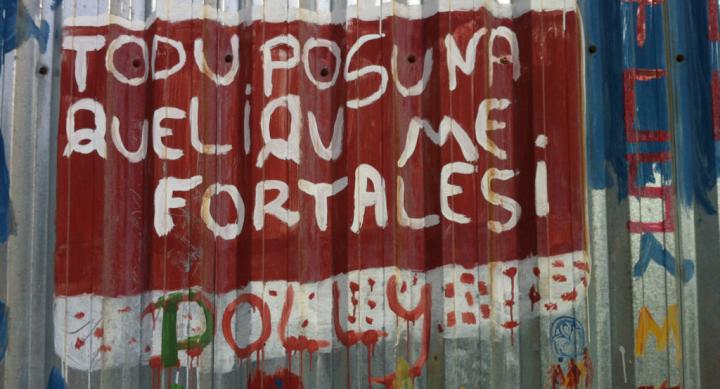
It is always challenging to create a new course. When we try to include course components where UT students have live interactions with non-UT students abroad through technology, we unavoidably insert additional layers of complexity into the process.
During the Spring 2018 semester, I taught for the first time a Global Classroom course in the Department of Spanish and Portuguese entitled, “Business in Brazilian Life and Culture,” that was aligned with a course taught by a colleague, Dr. Milton Torres, at the Universidade Nacional Adventista de São Paulo (UNASP). Special Projects in the International Office is the home of this grant-based initiative at UT; in addition to supporting other elements of the course, the grant allowed me to travel to UNASP and design the course with Dr. Torres. The Center for Teaching and Learning (CTL) is providing technological recommendations and instructional guidance for faculty who are offering these unique learning experiences for our students. While there were challenges to overcome in teaching this course, we found the experience to be deeply meaningful for our students and inspiring in the ways in which we might employ technology in our courses in the future.
One of the main objectives of this course was to teach students about the key areas where intercultural communication becomes challenging - in this case, "intercultural" meant between Brazil and the USA. As we covered these areas, students created an electronic database of original photographs (pictures that they themselves took here in Austin that exemplified the cultural issues we discussed in class). These photos were then shared with Brazilian students at UNASP. At the same time that our UT students were adding photos to their electronic portfolios, the students in Brazil were taking a course where they were also learning the same key areas of intercultural communication, and they also began taking photographs of items in Brazil. As students created the electronic database, their assignment was to share the photographs with each other and maintain a discussion thread with comments and questions about the cultural issues involved.
There were a number of logistical challenges and decisions that we had to make to create the infrastructure for the Global Classroom. The first dealt with scheduling. In the US our semesters run from late January until the first week of May. In Brazil, depending on when Carnaval happens, semesters run from the end of February until the beginning of July. The minimal overlap in these schedules created challenges in deciding when to collaborate. Our solution to this challenge was to allow each institution to create completely independent courses.
There were two schools and two separate courses, with distinct dates, exams, assignments, sizes, and number of credits. Each of these courses simply collaborated with the online photography portfolio, and the collaboration period happened mainly in the months of March and April. In this way we maximized flexibility among the institutions, but also maximized collaboration in the shared portfolios.
The CTL assisted in developing the initial ideas and provided suggestions for implementation. Specifically, we followed up on three recommendations. First, in order to create an electronic portfolio with the capacity to maintain discussion threads, we decided to use Pathbrite. We looked a number of different options but upon CTL recommendation, Pathbrite gave us the most flexible way to sort through discussion threads of photographs (by user, country and topic). Second, there were a few days when we conducted face-to-face video conferences with students from both institutions. We decided to implement Zoom, which gave us the flexibility, quality, bandwidth, and price we needed. Third, through CTL encouragement we offered electronic badges through Badgr as a way for students to advertise their proficiency in intercultural communication beyond our campus audiences. We often hear about electronic badges, but never seem to get beyond the brain-storming phase. It was exciting to think that we were able to actually implement badging in the course, enhancing the value of the students’ learning experience, and allowing them to build skills that they could share with prospective employers.
There are three challenges that we hope to address in future iterations of this course. First, our Brazilian partners teach their courses at night and most of our UT students take classes during the day. Since we conducted the video conferences at night, a number of our UT students were not able to participate. Everyone participated in the posting and commenting of photos, but not everyone was able to participate in the video conferences. Second, we also had some technical adjustment periods. For example, not all students adjusted their portfolio settings to allow them make their photos shareable or to allow for comments. It took a while to sort through these issues so that everyone could make comments and see the comments from others. Third, at times the UT students were waiting for the Brazilian partners to post photographs, but the Brazilian were not ready to post photographs because they had not covered the related topic in their class. Fortunately, since the object of the course was to teach students about intercultural communications, each of these challenges became real-life examples of authentic problems, not unlike similar challenges that would be faced in professional settings.
In the end, we were able to provide UT students with an engaging Global Classroom experience, one where they combined their learning about Brazilian culture with actual interactions with Brazilian students who are studying the same issues in a classroom many miles away. We are eager to sustain this class in future semesters and confident we can do so without additional funding as faculty teaching at two universities in different countries.

Orlando R. Kelm
Associate Professor, Department of Spanish and Portuguese
Professor Kelm’s most recent publications include two books in the "7 Keys" series from Georgetown University Press: The 7 Keys to Communicating in Brazil (2016) and The 7 Keys to Communicating in Japan (2017)

